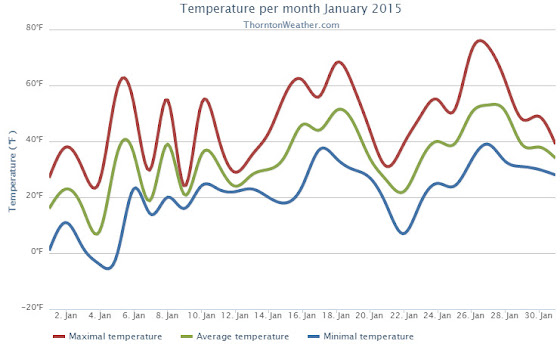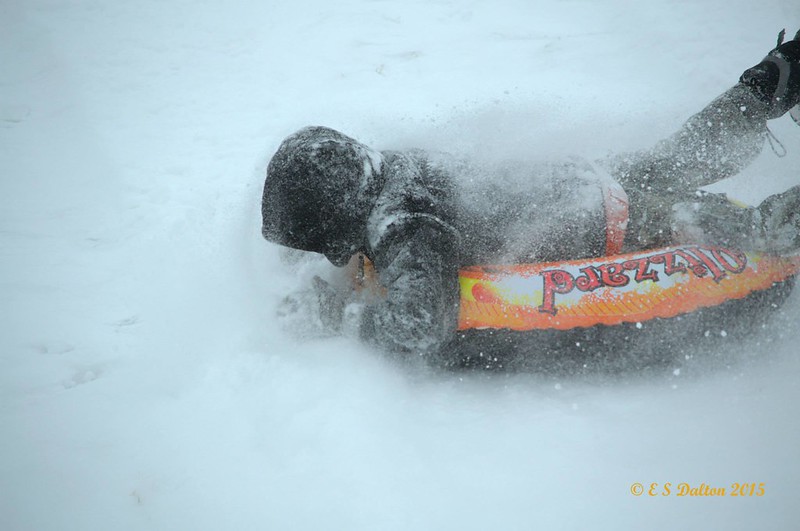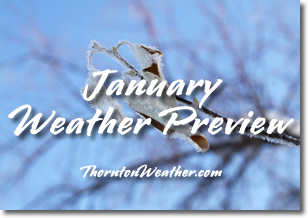
January weather is like the weather of any other month in Denver in that you can see just about any type of condition possible. However, three conditions are dominant during the month – wind, snow and cold. All three make many appearances in our look back at this week in Denver weather history.
From the National Weather Service:
7-10
In 1962…a major winter storm dumped 13.5 inches of snow on metro Denver. A foot of the snow fell on the 8th when northeast winds gusted to 30 mph. The storm was followed by an intense blast of very cold arctic air. Minimum temperature readings of 24 degrees below zero occurred on both the 9th and 10th. The temperature never reached above zero on the 9th when a maximum reading of 1 degree below zero was recorded. Temperatures were below zero for 37 consecutive hours.
8-10
In 1983…winds of 70 to 90 mph howled through Boulder. A wind gust to 100 mph was recorded on Fritz Peak near Rollinsville. A tree blown down by the wind damaged a house in eastern Boulder County. The strong winds developed behind a cold front late on the 8th and continued through the 10th. At Stapleton International Airport…west to northwest winds gusted to 49 mph on the 8th…to 45 mph on the 9th…and to 48 mph on the 10th.
9-10
In 1962…the low temperature plunged to 24 degrees below zero on both days.
In 1972…a west wind gust to 60 mph was recorded at Stapleton International Airport…while in Boulder a wind gust to 86 mph was recorded at the National Bureau of Standards. The roof of a house was blown off…and trees were blown down in Boulder. The high winds contributed to the damage from a building fire in Boulder.
In 2000…heavy snow and strong winds in the mountains spilled into the Front Range foothills. Ward…northwest of Boulder…received 9 inches of new snow. Wind gusts to 91 mph were measured in Golden Gate Canyon…with gusts to 77 mph at Loveland Ski Area and to 73 mph along State Highway 93 north of Golden. West winds gusted to 44 mph at Denver International Airport on the 9th.
In 2011…a winter storm brought moderate to heavy snowfall to areas in and near the Front Range foothills and Palmer Divide. Storm totals included: 13 inches…3 miles south of Golden; 11.5 inches near Eldorado Springs…10.5 inches… 2 miles southwest of Boulder; 10 inches…3 miles southwest of Roxbourough State Park; 9 inches at Genessee…8.5 inches in Arvada…4 miles south-southeast of Bennett and greenwood village…8 inches… 8 miles south of Elizabeth; 7 inches at Commerce City and 6.5 inches near Louisville and at Denver International Airport. Gusty winds produced snow drifts up to 2 feet deep over the Palmer Divide.
10
In 1893…strong west winds in Boulder and the adjacent foothills caused only minor damage.
In Denver…northwest winds were sustained to 48 mph with gusts as high as 60 mph. The Chinook winds warmed the temperature to a high of 64 degrees and a low of only 40 degrees…which was a record high minimum for the date.
In 1911…southwest Chinook winds sustained to 44 mph warmed the temperature to a high of 60 degrees.
In 1932…the first thunderstorm ever officially recorded in Denver during January occurred in the early morning. The assistant observer heard two prolonged peals of thunder between 4:20 am and 4:25 am. Another off-duty observer was awakened by the thunder. Other people reported both thunder and lightning. Light snow was falling at the time. Pellets of graupel or hail were reported from some parts of the city. Snowfall totaled only 1.8 inches. Northwest winds gusted to 30 mph.
In 1962…as the temperature dipped to a frigid 24 degrees below zero…setting a new record minimum for the date… The pressure adjusted to sea level reached the highest ever recorded in Denver…31.24 inches (1057.8 mb). The altimeter setting reached 30.70 inches…and the actual station pressure recorded was 25.260 inches.
In 1988…strong winds occurred throughout the day in and near the foothills. Peak gusts to 85 mph were recorded at Rollinsville…84 mph at Echo Lake…and 64 mph in Boulder.
In 1990…a third consecutive day of 50 to 85 mph wind gusts occurred in and along the eastern foothills. A 5 mile portion of the Denver-Boulder turnpike was closed after clouds of blowing dust and gravel caused several multicar accidents near Broomfield. One 59-year-old woman was killed and two others injured. A wind gust to 81 mph was recorded at the nearby Jefferson County Airport.
In Boulder…wind gusts to 85 mph were blamed for ripping off a portion of a roof on a house…as well as blowing out the large picture window. West winds gusted to 41 mph at Stapleton International Airport. The warm Chinook winds set a record high temperature of 71 degrees in Denver for the date.
In 1996…strong northwest winds developed behind a pacific cold front that moved rapidly across northeast Colorado. A peak wind gust to 64 mph was recorded at the Rocky Flats Environmental Test Facility in Jefferson County. North- northeast winds gusted to 38 mph at Denver International Airport.
10-11
In 1948…strong winds were reported in Boulder and Lakewood. Winds of 50 to 60 mph were reported at Valmont…just east of Boulder. Only minor damage was reported.
In 1980…strong winds of 60 to 95 mph howled across metro Denver…causing some brief power outages and some broken windows. A wind gust to 111 mph was recorded at Wondervu. Northwest winds gusted to 40 mph at Stapleton International Airport on the 10th.
In 1999…high winds gusting to 100 mph blasted the foothills. Peak wind gusts included: 100 mph at central city…98 mph at Wondervu…82 mph at Aspen Springs and Golden Gate Canyon… 81 mph at the NCAR Mesa Lab in Boulder and near Nederland… 78 mph atop Blue Mountain near Coal Creek Canyon…and 72 mph at the Rocky Flats Environmental Test Facility. West winds gusted to 38 mph and warmed the temperature to a high of 63 degrees at Denver International Airport on the 11th.
10-12
In 1997…heavy snow fell over the Front Range foothills. A foot of new snow was measured at Blackhawk with 7 inches recorded in Coal Creek Canyon. Only 3.3 inches of snow fell at the site of the former Stapleton International Airport. East-northeast winds gusted to 18 mph at Denver International Airport on the 11th.
10-13
In 1963…a arctic cold wave plunged temperatures well below zero across metro Denver. Temperatures were below zero for a total of 64 consecutive hours. Low temperatures reached 25 degrees below zero on both the 11th and 12th. The high temperature of 9 degrees below zero on the 11th was the coldest ever recorded at Stapleton Airport and equaled the record low maximum for the month first set on January 19…1883…in downtown Denver. The high temperature on the 12th reached only 1 degree below zero. On the 12th…an 18-year-old youth died of exposure from the extreme cold in Denver. There were many losses and damage to property from frozen water systems…stalled cars…and over-burdened heating systems. Light snow accompanied the arctic blast. At Stapleton Airport…2.3 inches of snow fell on the 10th and 11th.
Continue reading January 10 to January 16: This week in Denver weather history





 As we begin the new year the winter chill begins to set in. While January can see its share of extremes, the month historically sees stable temperatures and is usually relatively dry.
As we begin the new year the winter chill begins to set in. While January can see its share of extremes, the month historically sees stable temperatures and is usually relatively dry.